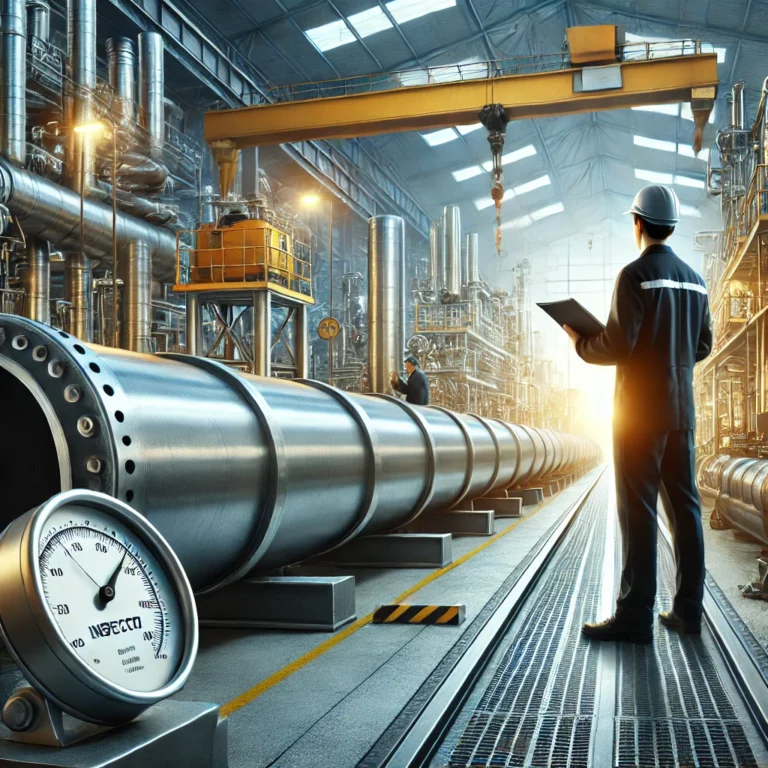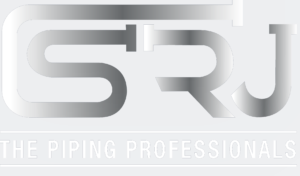Pipe Inspection Services: Ensuring Piping Quality and Longevity

Table of Contents
Piping systems are the lifelines of countless industries, from manufacturing and chemical processing to water supply and commercial infrastructure. They silently transport vital liquids, gases, and materials, making their integrity paramount to safety, efficiency, and environmental protection.
While often out of sight, the consequences of a failing pipeline—be it a small leak or a catastrophic rupture—can be devastating, leading to significant financial losses, environmental damage, and potential harm to personnel.
This is where professional piping inspection services become indispensable. Far from being a mere overhead, these services are a proactive, strategic investment that ensures the quality, longevity, and reliable performance of your piping networks. By leveraging specialized expertise and cutting-edge technology, these inspections go beyond superficial checks to thoroughly examine the health of your entire system.
Here are the key benefits that highlight why professional piping inspection services are crucial for any business relying on these critical conduits:
Proactive Problem Detection and Prevention
One of the foremost advantages of professional piping inspections is their ability to identify potential issues before they escalate into major, costly problems. Expert inspectors can detect:
- Early Signs of Wear and Tear: Pinpointing areas susceptible to corrosion (internal and external), erosion, fatigue, and general material degradation. This includes identifying pitting, thinning of pipe walls, and localized damage.
- Structural Integrity Issues: Identifying hidden cracks, deformities, or weld defects that could compromise the pipe’s strength, which are often undetectable by the naked eye.
- Internal Blockages and Buildup: Locating sediment, scale, or foreign material accumulation that restricts flow, increases pressure requirements, and reduces overall system capacity.
- Leakage Points: Detecting even hairline leaks or micro-seepages that, if left unattended, can lead to significant material loss, environmental contamination, and structural damage to surrounding infrastructure.
- Misalignments and Stress Points: Identifying improper installation, ground movement, or thermal stresses that can lead to future failures at joints, supports, or bends.
By catching these minor issues early, professional inspections enable timely intervention, such as targeted repairs, cleaning, or localized replacements, thereby preventing them from developing into emergencies that require extensive and expensive overhauls.
Significant Cost Savings and Extended Asset Lifespan
Investing in regular professional pipe inspections is a proven long-term cost-saving strategy. While there’s an initial outlay for the service, the returns far outweigh the expenses:
- Reduced Emergency Repairs: Proactive maintenance significantly reduces unexpected breakdowns and the associated high costs of emergency repairs, often involving overtime labor, expedited parts, and specialized equipment.
- Minimized Downtime: Scheduled inspections and repairs result in planned outages, which are far less disruptive and less expensive than unscheduled shutdowns caused by sudden pipe failures, thereby protecting production schedules and revenue.
- Optimized Operational Efficiency: Healthy pipes ensure consistent flow rates, reduced friction, and optimal pressure. This leads to more efficient pump performance, lower energy consumption, and overall smoother process operations.
- Extended Asset Lifespan: By addressing minor issues promptly and maintaining optimal conditions, professional inspections significantly prolong the operational life of your entire piping infrastructure, delaying the need for costly full-system replacements and maximizing your return on capital investment.
Enhanced Safety and Risk Mitigation
Safety is paramount, especially in industries that handle hazardous materials or operate under high pressure. Professional piping inspections play a vital role in mitigating risks:
- Preventing Accidents and Catastrophes: By identifying structural weaknesses, leaks of flammable or toxic substances, or potential ruptures, inspections directly avoid accidents that could lead to explosions, fires, chemical exposure, or other severe incidents.
- Protecting Personnel: A well-maintained piping system reduces the risk of injuries or fatalities for workers who operate near, maintain, or are simply present in the vicinity of these systems.
- Safeguarding Assets: Preventing pipe failures protects other valuable equipment, machinery, buildings, and the surrounding infrastructure from damage caused by leaks, ruptures, or associated hazards.
- Environmental Protection: Timely detection and repair of leaks prevent the spillage of pollutants or hazardous materials into the environment, safeguarding ecosystems, and helping businesses avoid hefty environmental fines and reputational damage.
Ensuring Regulatory Compliance and Legal Adherence
Many industries are subject to stringent local, national, and international regulations regarding the integrity and maintenance of their piping systems. Professional inspections help businesses stay compliant:
- Meeting Industry Standards: Ensuring adherence to industry-specific codes and standards (e.g., API, ASME, ISO, specific Indian standards) that dictate inspection frequencies, methods, and acceptable conditions for various types of piping.
- Avoiding Fines and Penalties: Regular, documented inspections provide irrefutable proof of due diligence, helping businesses avoid hefty fines, legal repercussions, and operational shutdowns due to non-compliance.
- Maintaining Operational Licenses: For many regulated industries (e.g., oil & gas, chemical, power), demonstrating a robust inspection and maintenance program is a prerequisite for obtaining or retaining operational licenses.
- Insurance Requirements: Many insurance policies require proof of regular inspections and maintenance to validate coverage for potential damages, ensuring your business is protected financially.
Increased Operational Efficiency and Reliability
A healthy piping system is fundamental to smooth and reliable operations. Professional inspections contribute significantly to this:
- Consistent Flow and Pressure: Identifying and clearing blockages, as well as repairing damage, ensures consistent flow rates and optimal pressure within the system, preventing performance dips and ensuring process stability.
- Reduced Unplanned Outages: By addressing issues proactively through scheduled maintenance, the frequency of unplanned shutdowns due to piping failures is drastically reduced, leading to greater operational continuity and predictable production.
- Optimized Resource Allocation: Data from comprehensive inspections can help maintenance teams prioritize repairs, allocate resources more effectively, and focus on areas of greatest need, improving efficiency in maintenance budgets.
- Data-Driven Decision Making: The detailed reports and performance data collected during inspections provide invaluable insights for future planning, system upgrades, capital expenditure decisions, and optimizing asset lifespan.
Precision and Accuracy with Advanced Technology
Modern professional piping inspection services leverage a suite of advanced technologies that offer unparalleled precision and insights into the condition of your piping:
- Non-Destructive Testing (NDT) Methods: These techniques assess material integrity without causing damage. They include: Ultrasonic Testing (UT), Radiographic Testing (RT), Magnetic Particle Testing (MPT), Eddy Current Testing (ECT), and Guided Wave Testing (GWT)
- In-Line Inspection (ILI) / “Smart Pigging”: For long pipelines, intelligent “pigs” equipped with various sensors (Magnetic Flux Leakage, UT, caliper) travel through the pipe’s interior, collecting vast amounts of data on corrosion, cracks, and anomalies.
- Visual Inspection (Remote & Direct): High-definition CCTV cameras, often mounted on robotic crawlers or borescope probes, allow for detailed visual examination of internal pipe surfaces, even in inaccessible areas. Drones can be used for external visual inspections of elevated piping.
- Acoustic Leak Detection: Specialized sensors can identify the distinct sounds of even tiny leaks, pinpointing their exact location, often without the need for excavation.
- Thermal Imaging (Infrared Thermography): Used to detect temperature anomalies that might indicate leaks, blockages, or areas of corrosion, especially under insulation.
These sophisticated tools enhance the accuracy and productivity of inspections, providing a comprehensive “health check” of the entire piping network and allowing for early identification of hidden issues.
The Professional Approach: What to Expect from an Inspection Service
A reputable professional piping inspection service typically follows a structured and thorough process to ensure comprehensive evaluation:
- Initial Consultation and Scope Definition: The service provider will engage with you to understand your specific piping system, industry, operational parameters, potential concerns, and compliance requirements. This helps in tailoring the inspection plan.
- Documentation Review: Engineers will review existing system schematics, design documents, previous inspection reports, and maintenance histories to gain a complete understanding of the pipeline’s background.
- Pre-Inspection Planning: This involves selecting the most appropriate inspection methodologies and technologies based on the piping material, age, service fluid, and potential degradation mechanisms. Equipment calibration, personnel training, and certification verification are also conducted.
- On-Site Inspection Execution: Skilled and certified inspectors will perform the chosen inspection methods. This includes visual inspections, deploying NDT tools, utilizing robotic crawlers, or conducting pressure tests as planned. Safety protocols are rigorously followed during this phase.
- Data Acquisition and Analysis: Raw data collected from sensors, cameras, and NDT equipment is meticulously gathered and then analyzed by expert engineers. This involves processing images, interpreting NDT readings, and correlating data points to identify anomalies.
- Detailed Reporting and Recommendations: A comprehensive report is generated, detailing all findings, including identified defects, their location, severity, and potential impact. The report often includes photographic or video evidence, data charts, and clear explanations. Crucially, it provides actionable recommendations for repairs, maintenance, or further investigation, along with proposed timelines.
- Post-Inspection Support: Reputable providers often offer follow-up support, helping clients understand the report, prioritize recommendations, and plan subsequent maintenance or repair work.
Your Partner in Piping Integrity: SRJ Piping India
Maintaining a well-functioning, safe, and cost-effective piping system is essential for any business’s success. Neglecting regular professional pipe inspections can lead to catastrophic failures, significant financial burdens, and severe safety hazards.
SRJ Piping India stands as a leader in providing comprehensive professional piping inspection services. By combining highly experienced and certified technicians with state-of-the-art technology, they offer customized solutions tailored to the specific needs of various industries, from industrial facilities to commercial buildings. Their commitment to detail, accuracy, and strict adherence to relevant industry standards and safety regulations ensures that your piping infrastructure remains robust, reliable, and compliant, securing your operations for the long term.
For detailed information on their services and how they can enhance the quality and longevity of your piping system, contact SRJ Piping India.
Professional piping inspection services are the invisible shield protecting your industrial operations from catastrophic failures and regulatory nightmares. According to the American Petroleum Institute’s API 570 Standard, facilities with certified inspection programs experience 62% fewer unplanned shutdowns – a statistic that validates our ISO 9001-certified Piping QA/QC Process. When a Chennai chemical plant’s undetected corrosion led to ₹18 crore in damages (as cited in this CSB Investigation Report), it underscored why our Advanced NDT Inspection Team combines ultrasonic thickness testing with RBI methodologies. In India’s punishing operational environments, skipping professional inspections isn’t cost-cutting – it’s Russian roulette with your assets and workforce.
Strategic Linking Framework
| Link Type | Example | Purpose |
|---|---|---|
| Industry Standard | API 570 | Establishes global benchmark |
| Horror Story Proof | CSB Report | Creates urgency through real consequences |
| Service Differentiator | QA/QC Page | Highlights technical capabilities |
| Solution Pathway | NDT Services | Directs to revenue-generating service |
Pro Tip: Add a “Red Flag Checklist” callout box:
Piping vibration beyond API 570 limits
Corrosion rates >0.5mm/year
Missing inspection records for >12 months
Non-compliant weld procedures (ASME B31.3)
